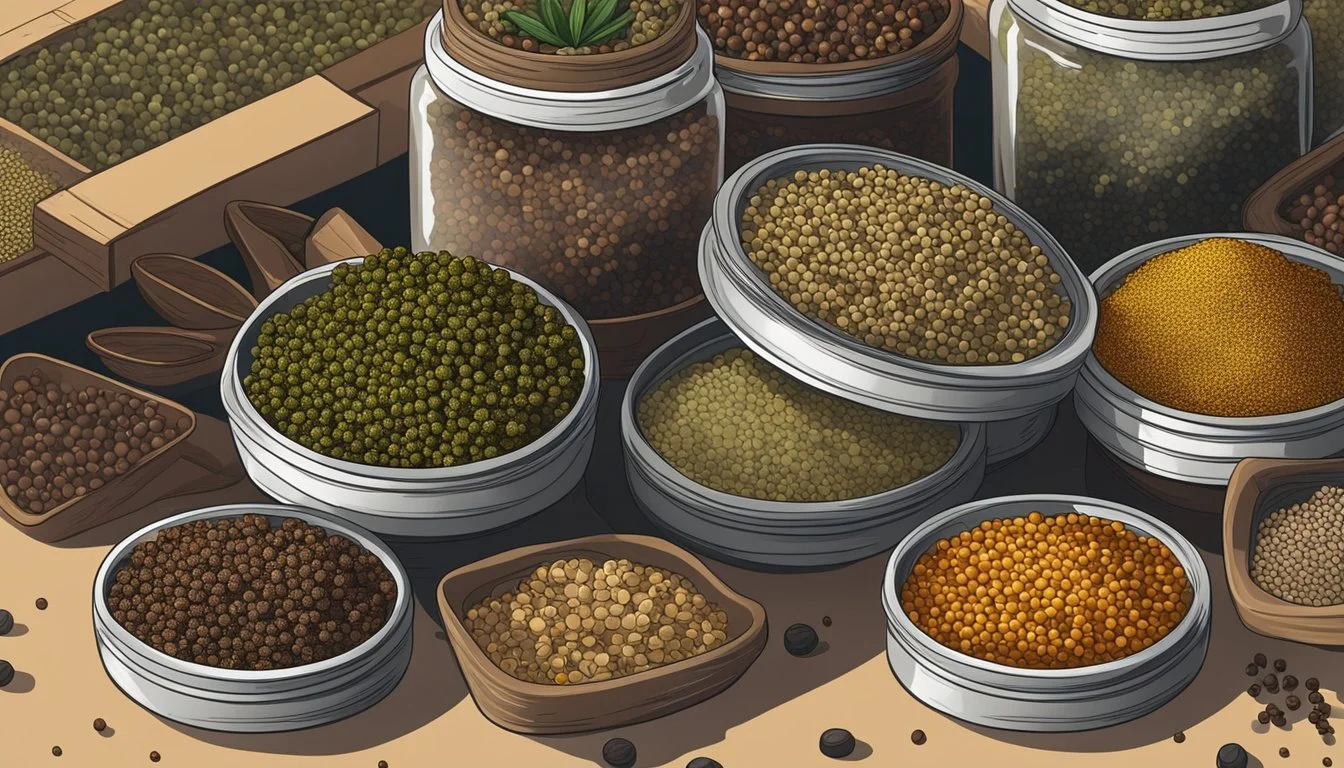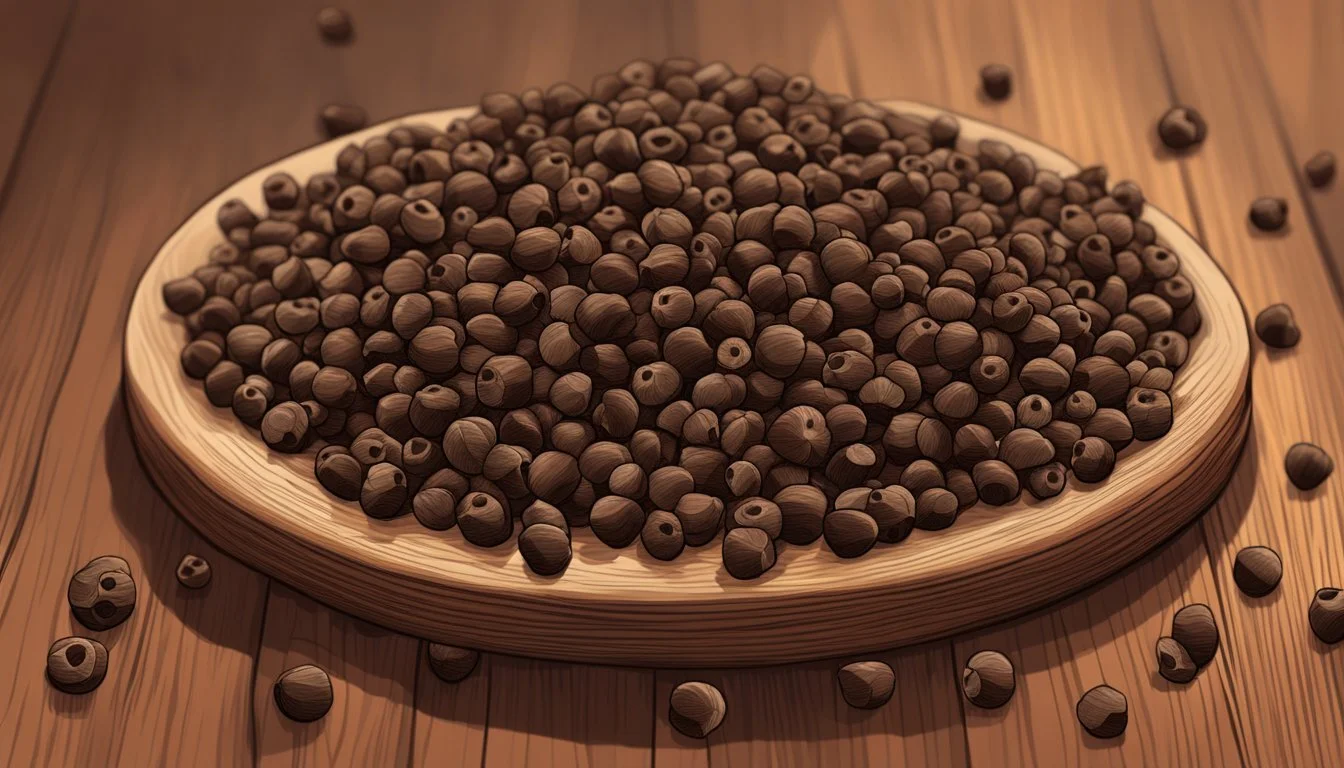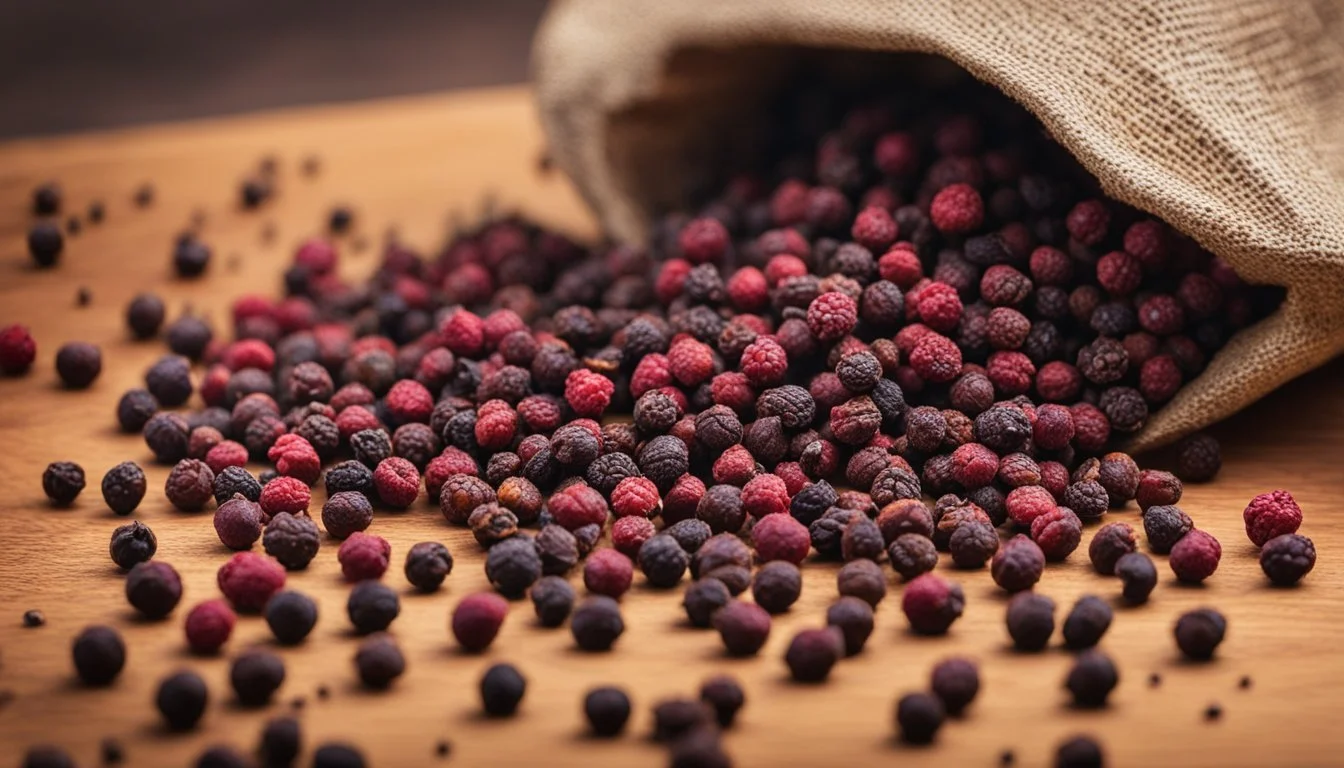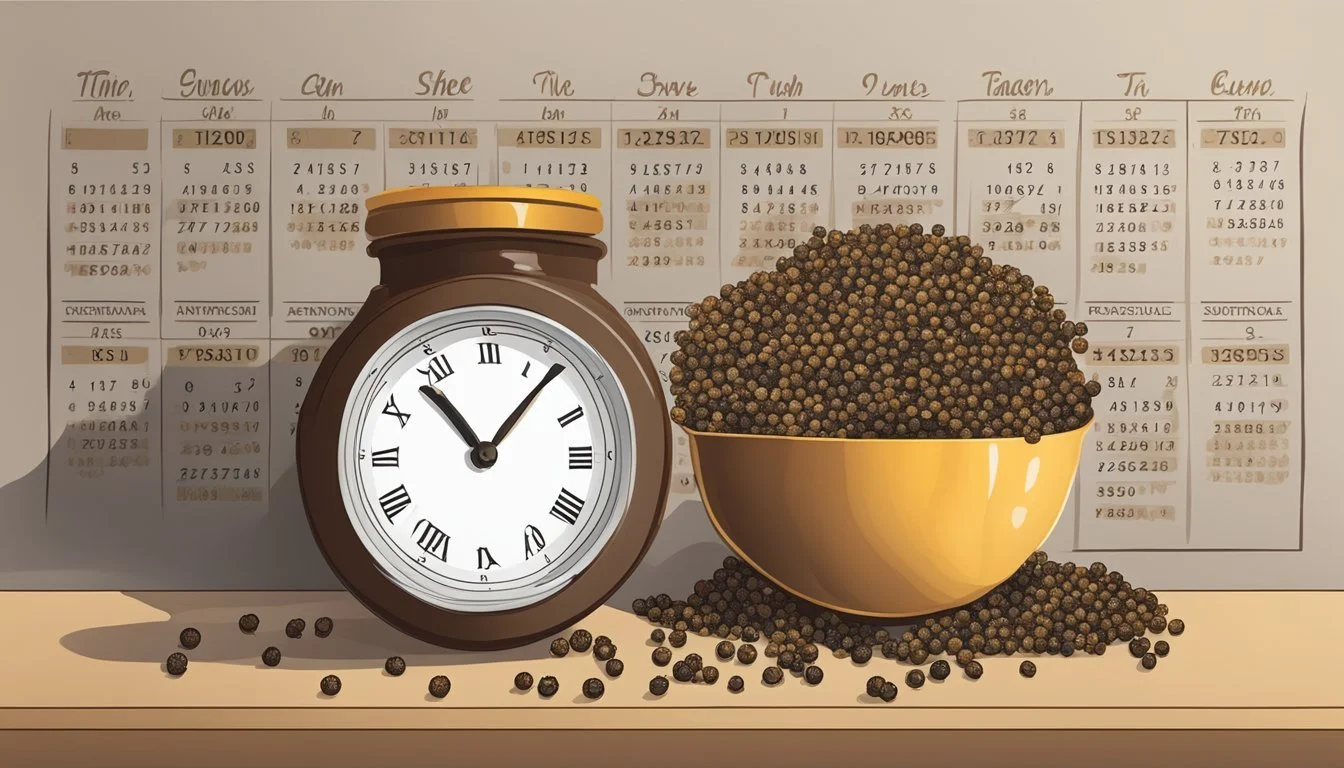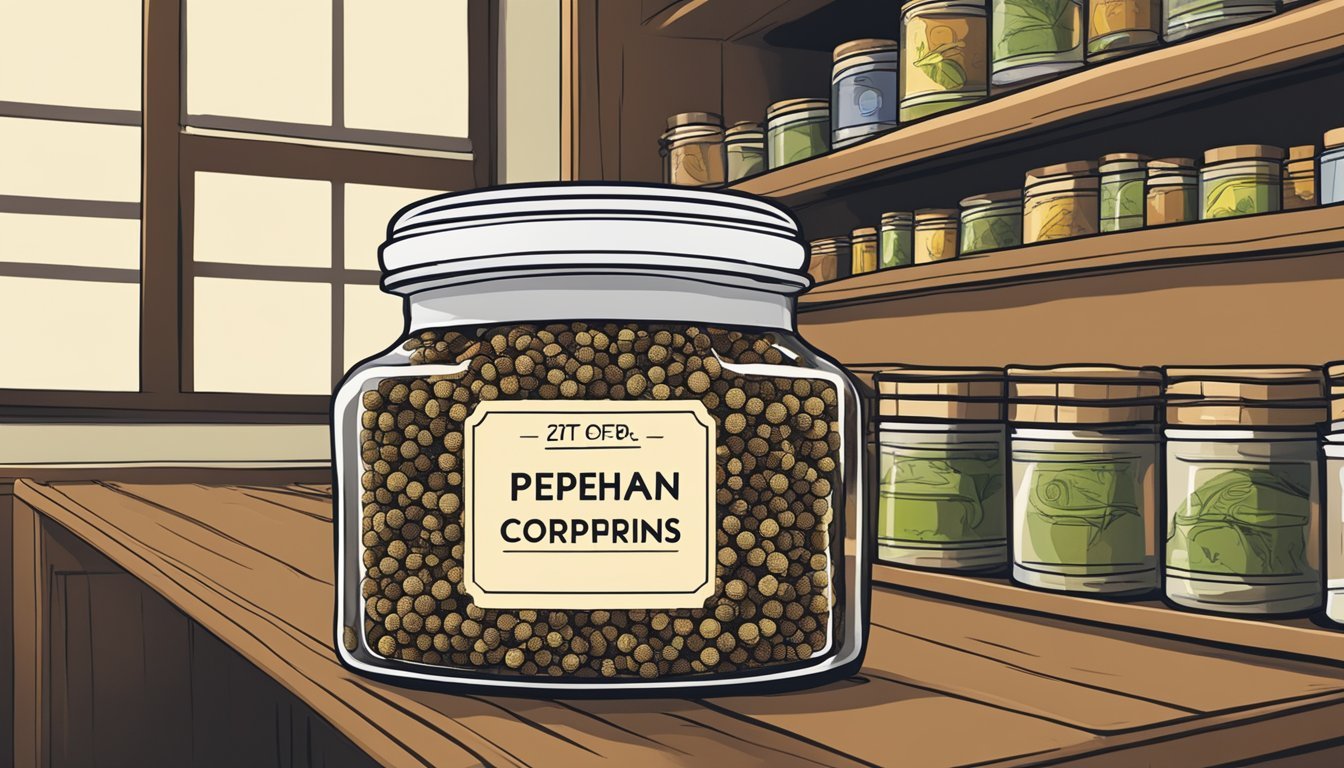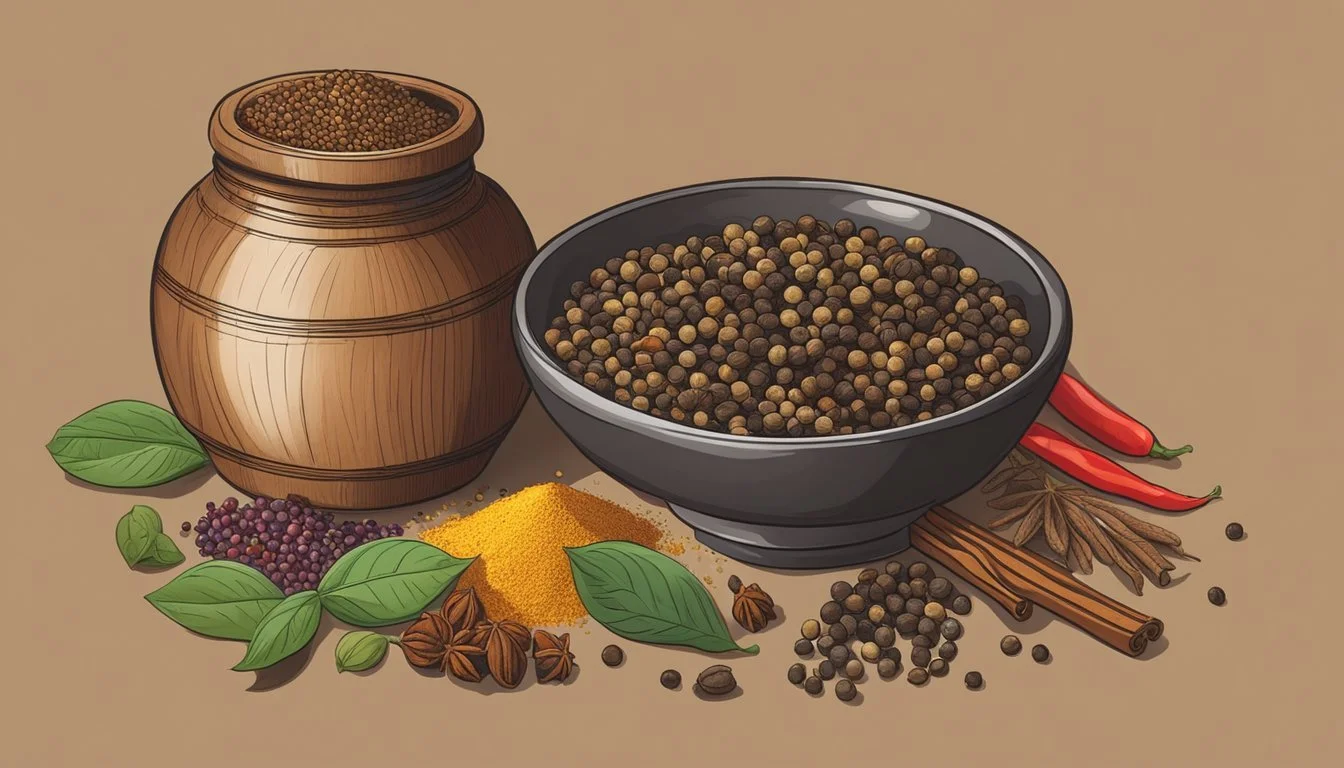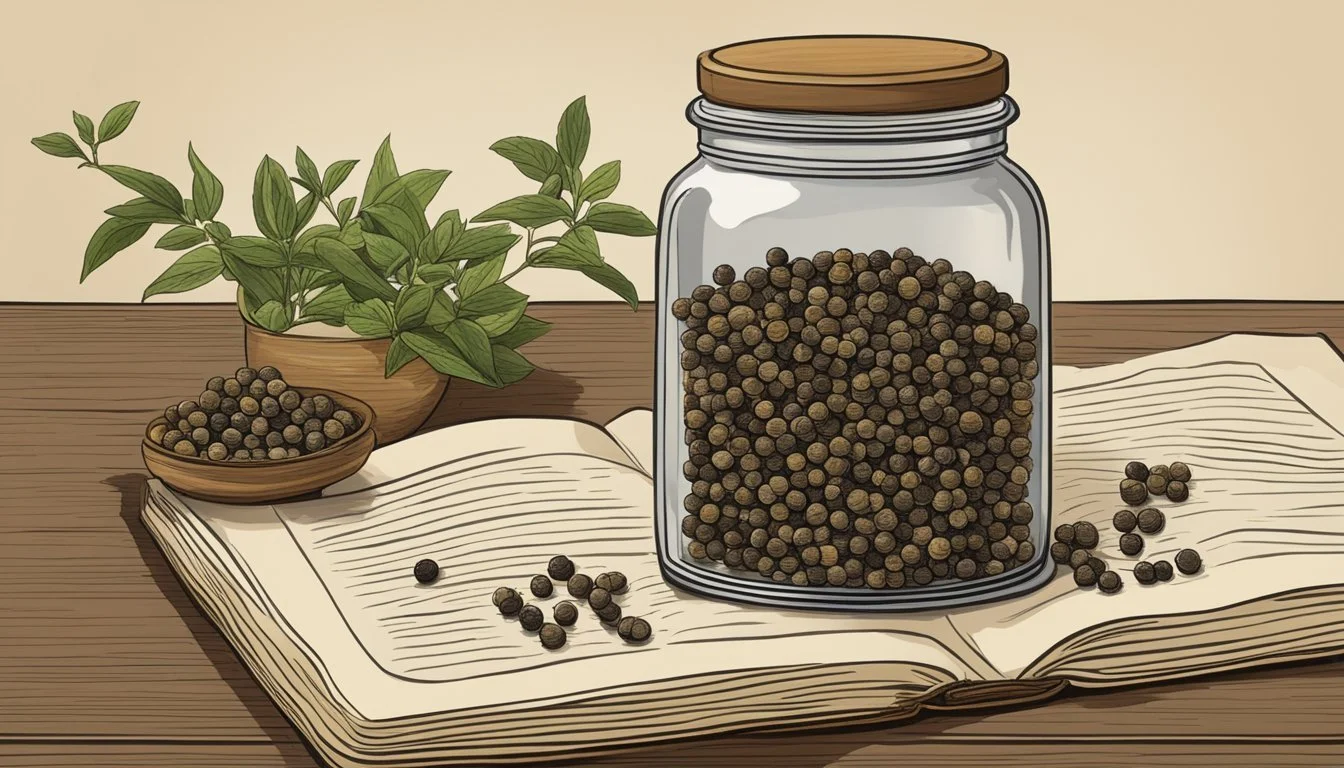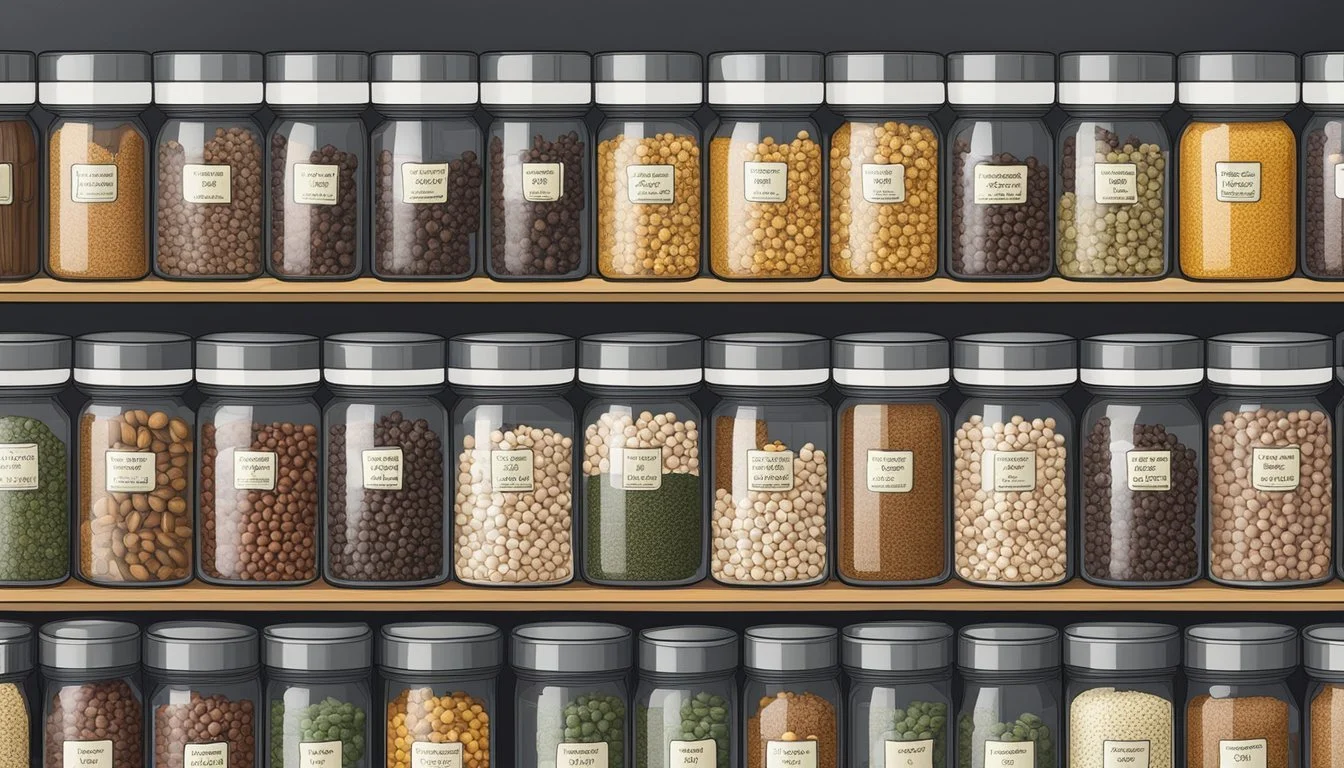How Long Do Szechuan Peppercorns Last?
Understanding Their Shelf Life
Szechuan peppercorns, known for their unique numbing sensation and aromatic fragrance, are a staple in Chinese cuisine, particularly in dishes from the Sichuan province. These peppercorns are not true peppercorns, but the dried berries of the Chinese prickly ash bush. The shelf life of Szechuan peppercorns is influenced by several factors including the way they are stored and whether they are kept whole or ground.
When storing Szechuan peppercorns, it is crucial to keep them in a cool, dry place away from direct sunlight. This helps to preserve their potent aroma and flavor. In optimal storage conditions, whole Szechuan peppercorns can retain their quality for several years. However, once ground into powder, they are more susceptible to losing their distinct characteristics and generally have a shorter shelf life.
Determining the freshness of Szechuan peppercorns can be done by examining their aroma and taste. Fresh peppercorns should release a strong, citrusy fragrance when lightly crushed and should impart a noticeable numbing effect on the palate. This numbing quality, along with the flavor, fades over time, signaling that the peppercorns are past their prime. While Szechuan peppercorns do not spoil in a way that makes them unsafe to consume, their culinary contribution diminishes as time progresses.
What Are Szechuan Peppercorns?
Szechuan peppercorns, known as huā jiāo in Mandarin, are an integral component of Chinese cuisine, particularly within Sichuan Province. These peppercorns bear the botanical name Zanthoxylum simulans and stem from the Chinese prickly ash bush.
Despite their common reference as "peppercorns," they are not related to black, white, or chili peppers. Their unique trait lies in the aroma and flavor, which evoke a lemony, earthy character. When it comes to taste, Szechuan peppercorns are celebrated for creating a "mala" sensation, a term that describes the distinctive numbing-spicy experience they impart.
The color of Szechuan peppercorns can be described as a reddish-brown, and upon closer inspection, they present a rugged, wrinkled appearance. In culinary applications, these peppercorns release their flavor through various methods, such as toasting and grinding.
Szechuan peppercorns are fundamental in Sichuan cuisine, playing a crucial role in the makeup of the region’s renowned bold flavors. They are typically employed in conjunction with other spices to deepen the complexity of a dish’s flavor profile.
In summary, Szechuan peppercorns contribute not only a specific tingling sensation to dishes but also provide an enticing aroma. They are a distinctive hallmark of Sichuan cooking and are esteemed for their ability to combine taste and tactile sensations.
The Unique Qualities of Szechuan Peppercorns
Szechuan peppercorns stand out in the culinary world for their distinctive sensory properties. Unlike common black or white peppercorns (how long do white peppercorns last?), Szechuan peppercorns are known for a mouth-numbing sensation instead of heat. This trait stems from the presence of hydroxy-alpha sanshool in the outer husk of the peppercorn.
Aroma and Sensation:
Numbing Sensation: A characteristic tingling numbs the palate.
Tingling Sensation: Patrons often describe a gentle vibrating feeling on the tongue.
Aroma: Its aroma contributes to its popularity, providing a citrus-like scent that complements the unique taste.
When added to a dish, Szechuan peppercorns impart their signature tingly numbness, enhancing the dish's flavor profile without contributing significant heat. This is particularly emblematic of Sichuan cuisine, where the fusion of numbing and spicy flavors, termed mala, is celebrated.
Varieties:
Green Sichuan Pepper: Known for a more intense aroma, a fresher, and a less numbing effect.
Red Sichuan Peppercorn: Offers a more balanced numbing sensation and is often used in traditional Sichuan dishes.
The flavor complexities of these peppercorns are integral to Sichuan cooking, adding layers of sensation that distinguish the cuisine and leave a memorable impact on the diner's sensory experience.
Optimal Storage for Maximum Freshness
Proper storage is crucial for preserving the quality and freshness of Szechuan peppercorns. The key factors are maintaining a dry environment, using airtight containers, and understanding when to refrigerate or freeze.
Dry and Cool Places
Szechuan peppercorns retain their potency when stored in an environment that is consistently dry and cool. They should be kept away from direct sunlight, humidity, and variations in temperature, which can diminish their flavor. An ideal storage space could be a pantry or a cupboard away from heat-producing appliances.
Airtight Containers
Airtight containers are essential for protecting Szechuan peppercorns from moisture and air exposure. The freshness of the peppercorns is prolonged when they are sealed properly. Containers made of glass or metal with secure lids make suitable choices. Moreover, the original packaging may suffice if it reseals well.
For whole Szechuan peppercorns:
Use containers that are just large enough to fit the amount of spice, minimizing the air space inside.
For ground Szechuan peppercorns:
Opt for smaller containers to reduce air exposure, which accelerates the loss of flavor.
Refrigeration and Freezing
The refrigerator or freezer can be considered for long-term storage of Szechuan peppercorns. However, this is typically unnecessary unless in very humid climates. For refrigeration:
Ensure the peppercorns are in an airtight container to prevent absorption of other food odors.
Use a clear container or label the contents for easy identification.
Freezing can be a suitable option for extending the shelf life further, particularly for bulk quantities. Store in small batches to use as needed without thawing the entire amount.
Shelf Life and Potency
Szechuan peppercorns are renowned for their unique numbing sensation and bold flavor, which play a paramount role in numerous culinary applications. Proper storage is critical to maintaining both their shelf life and potency.
Shelf Life: Szechuan peppercorns have an impressive shelf life when stored correctly. Their viability extends significantly if kept in optimal conditions—away from moisture, light, and heat. To maximize longevity, it is advisable to store them in:
An airtight container
A cool, dry environment
Under such conditions, they can remain suitable for use well beyond a year, but the pinnacle of their flavor and numbing effect is best experienced within the first year.
Potency: The peppercorns' potency is largely contingent on freshness and quality at the time of purchase. Notably, green Szechuan peppercorns are typically fresher and therefore more potent than their red counterparts. However, even with the highest quality, the intensity of their unique characteristics will gradually diminish over time.
Storage Recommendations:
Color Retention: Keep them out of direct sunlight to preserve color.
Moisture Prevention: Ensure the storage area is free from dampness to prevent mold.
Regular Check: Periodically checking the condition can be beneficial.
The value that Szechuan peppercorns bring to a dish is inextricably linked to their freshness and potency, underscoring the importance of proper spice management. Chefs and culinary enthusiasts can expect a marked difference when using peppercorns that have been well-preserved versus those more elapsed in shelf life.
Preparing and Using Szechuan Peppercorns
Szechuan peppercorns require specific preparation methods to maximize their unique numbing and aromatic qualities. Proper preparation techniques and applications in cooking can elevate dishes such as stir-fries, dan dan noodles, mapo tofu, soups, and kung pao chicken.
Toasting Technique
Toasting Szechuan peppercorns is crucial for releasing their volatile oils, thus intensifying their flavor and aroma. To toast:
Place the peppercorns in a dry pan.
Heat over medium until they become fragrant.
Grinding Methods
Once toasted, Szechuan peppercorns are typically ground into a powder for culinary use. Effective grounding can be achieved by:
Using a spice grinder for a fine, consistent powder.
Crushing them in a mortar and pestle for a coarser texture.
Cooking Applications
Ground Szechuan peppercorns are versatile in cooking. They should be used based on the desired sensation and flavor:
Mapo Tofu & Dan Dan Noodles: They are essential for the tingling sensation.
Stir-fries: Use ground pepper sparingly to imbue the dish with a hint of their characteristic flavor.
Soups & Kung Pao Chicken: Incorporate the peppercorns either whole or ground for an added layer of complexity.
Using these techniques, cooks can infuse dishes with the mouth-numbing magic of Szechuan peppercorns, elevating the sensory experience of traditional and modern recipes alike.
Recognizing and Maintaining Quality
Identifying high-quality Sichuan peppercorns is crucial for culinary applications. They possess a unique aroma and a sensory-tingling characteristic not found in common black pepper, white peppercorn, or green peppercorn varieties.
Visual Indicators:
Color: Fresh Sichuan peppercorns come in various shades. Green Sichuan pepper should be a vibrant green, indicating freshness, whereas red Sichuan peppercorn should display a rich reddish hue.
Appearance: Look for peppercorns that appear plump and free from excessive wrinkles; this suggests optimal freshness.
Aromatic Qualities: Quality Sichuan peppercorns should release their distinctive citrus-like aroma when lightly crushed. Stale peppercorns may have a diminished smell, suggesting a loss of essential oils.
Proper Storage Techniques:
Container: Store in an airtight container to protect from moisture and preserve the volatile oils responsible for the peppercorns' aroma and flavor.
Environment: Keep away from heat and direct sunlight. A cool, dark cupboard is ideal for maintaining the integrity of the peppercorns.
Shelf Life: Well-stored Sichuan peppercorns can retain their quality for up to a year, though their most intense flavors are best enjoyed within a few months of purchase.
By following these guidelines, they can ensure their Sichuan peppercorns maintain their quality, providing a flavorful and aromatic addition to Sichuan cuisine.
Integration in Culinary Traditions
Szechuan peppercorns, known for their distinctive numbing effect, are a hallmark of Szechuan cuisine, one of China's Eight Great Cuisines. They impart an unmistakable sensation that, when combined with heat from other spices such as Chinese chilies, creates the renowned mala (numbing-spicy) flavor profile. This unique quality transcends mere spiciness and adds a dynamic sensory experience to dishes.
Incorporated into a myriad of recipes, Szechuan peppercorns are a key component of Chinese five spice powder, a blend that typically includes star anise, (how long does star anise last?) cloves, cinnamon, and fennel (how long does fennel last?) seeds alongside peppercorns. This mixture illustrates the philosophy of balance in Chinese cuisine, with each ingredient contributing to the overall harmony of flavors.
The peppercorns' versatility finds them ground into powders, infused in oils, or used whole in various applications. They are particularly integral to the experience of indulging in a traditional Sichuan hot pot or Chongqing hotpot, where they add complexity and a tongue-tingling sensation to the broth.
When discussing storage longevity, it's notable that while whole Szechuan peppercorns retain their potency for longer, the ground form can still be used effectively within a shorter span if stored properly. Chefs and home cooks alike value their ability to elevate a dish with both their flavor and their iconic numbing effect.
Usage Description Whole Peppercorns Added to broths and infusions Ground Powder Mixed into spice blends and rubs Infused Oil Drizzled over dishes for added aroma and heat
In summary, Szechuan peppercorns are not merely a seasoning but an essential spice that integrates deeply with the culinary traditions of Chinese cuisine, especially within the spicy and aromatic repertoire of Sichuan dishes.
Cultural Significance and History
Sichuan Province, renowned for its fiery and bold cuisine, has long celebrated 花椒 (huā jiāo) or Sichuan peppercorns as a culinary staple. These peppercorns, known for their unique 麻辣 (mala) flavor, which translates to "numbing-spicy," play a crucial role in Sichuanese dishes. The term mala is a combination of two Chinese characters: "麻" meaning tingling or numbing sensation, and "辣," meaning spicy. This distinct sensation is at the heart of many local recipes, heavily influencing the province's food culture.
The mala flavor is so integral to the region that an entire market, aptly named The Mala Market, specializes in providing such ingredients to a global audience, further emphasizing its cultural value. Traditionally, dried peppercorn played a role not only as a spice but also as a form of currency, underscoring its historical importance.
Sichuan peppercorn oil, extracted from the peppercorns, is another product that has transcended its initial culinary use, finding a place in both cuisine and traditional Chinese medicine.
The Chinese name for these peppercorns, 花椒 (huā jiāo), roughly translates to "flower pepper," drawing attention to their appearance similar to flower buds. Harold McGee, a renowned food scientist, attributes the unique sensation these peppercorns produce to the presence of hydroxy-alpha sanshool in his writings.
In summary, Sichuan peppercorns are much more than a spice. They are deeply woven into the historical and cultural fabric of Sichuan cuisine and continue to have an impact both locally and internationally.
Global Accessibility and Purchase Options
Szechuan peppercorns, an essential component in international cuisine, especially within Sichuan dishes, are globally available and can be purchased from a variety of sources. In the United States, consumers have the convenience of acquiring Szechuan peppercorns from several outlets.
Online Retailers:
Amazon: Offers whole and ground Szechuan peppercorns from various brands, available in multiple package sizes.
Specialty Spice Shops: Online stores specializing in spices often carry Szechuan peppercorns, with options for bulk purchases.
Local Availability:
Asian Grocery Stores: These stores are widespread across the USA and usually stock Szechuan peppercorns among their inventory.
Asian Markets: Neighborhood Asian markets are another common source, providing access to fresh and authentic Szechuan peppercorns.
Availability can vary depending on the region, but most populated areas in the USA have access to stores that cater to Asian or specifically Chinese ingredients. The rise in popularity of international cuisine and the ease of online shopping have further increased the accessibility of Szechuan peppercorns. Here's a brief overview:
Source Types Available Package Sizes Amazon Whole, Ground Various Specialty Spice Shops (Online) Whole, Ground Small to Bulk Asian Grocery Stores Whole, Occasionally Ground Small to Medium Asian Markets Whole Typically Small
Consumers looking to incorporate the unique numbing spice of Szechuan peppercorns into their cooking have little difficulty in sourcing it. Whether through a quick online order or a visit to a nearby Asian market, options span from small packets to larger bulk purchases, catering to both occasional home cooks and culinary enthusiasts alike.
Alternatives and Substitutes
When Szechuan peppercorns are not available, culinary enthusiasts can turn to several substitutes to capture a similar flavor profile in their dishes. Not all alternatives will replicate the unique mouth-numbing sensation of Szechuan peppercorns, but they will contribute to a complex and spicy character in the recipe.
Here are commonly recommended substitutes:
Black Peppercorn: The most accessible, it lends a heat but lacks the citrusy, numbing effect.
Sansho Peppercorns: A Japanese variant, closer in taste to Szechuan peppercorns, including the numbing sensation.
Tellicherry Peppercorns: They offer a more robust flavor due to their maturity and are best used fresh from a pepper grinder.
Grains of Paradise: Belonging to the ginger family, they offer a warm, earthy flavor with a hint of citrus.
Coriander Seeds: They provide a citrusy, floral note that complements many Szechuan dishes.
Reflecting on the composition of Szechuan peppercorns, which are part of the citrus family, one could also consider using actual citrus zest combined with other peppercorns to emulate both the tangy and spicy aspects.
While no substitute will perfectly mimic the experience of Szechuan peppercorns, blending alternative spices like cinnamon or other peppercorns with a citrus element, could provide a balanced complexity to Szechuan-inspired recipes. Each substitute brings a distinct touch; the best choice depends on the flavor dynamics that an individual aims to achieve in their cooking.

